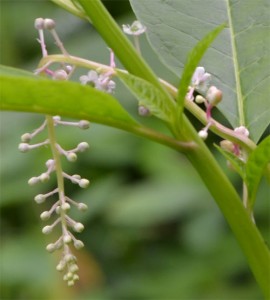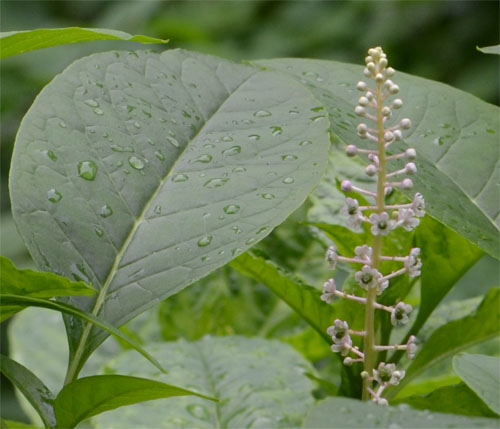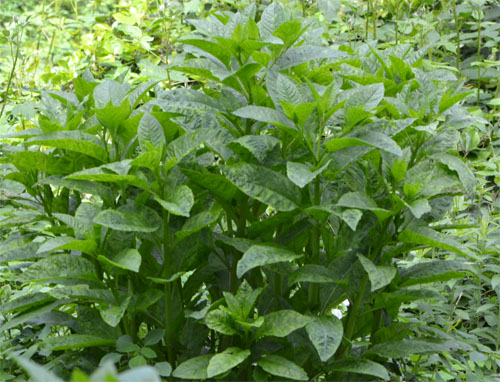 Phytolacca americana is a tall fast-growing perennial, native to the eastern US. Currently pokeweed is starting to show greenish-white flowers, and in late summer and fall the plant will produce dark red berries that grow even darker over time. The juice of the berries was once used as an ink substitute, and to add color to wines. Native Americans used the berries to color their horses. Most parts of the plants are extremely poisonous to mammals and humans, especially the root, berries, and flat seeds within those berries. Birds can eat the fruit because they pass the seeds intact.
Phytolacca americana is a tall fast-growing perennial, native to the eastern US. Currently pokeweed is starting to show greenish-white flowers, and in late summer and fall the plant will produce dark red berries that grow even darker over time. The juice of the berries was once used as an ink substitute, and to add color to wines. Native Americans used the berries to color their horses. Most parts of the plants are extremely poisonous to mammals and humans, especially the root, berries, and flat seeds within those berries. Birds can eat the fruit because they pass the seeds intact.
Despite the poisonous nature of pokeweed, fresh young leaves and shoots may be cooked and consumed. Those same greens are commercially available as a canned vegetable known as poke salet or poke salet greens – you will still see it in the south and in places like California where many dustbowl victims migrated. Pokeweed definitely is a depression era or poor folks’ vegetable.

Flowers appearing on the pokeweed July 1 2011
I will add some recipes below, but try these at your own risk: If taken internally, pokeweed is a slow acting but very violent emetic. Vomiting usually starts about 2 hours after having eaten the plant. Poisoning will result in purging, spasms, and convulsions. Death can occur due to paralysis of the respiratory organs.
Now, are you still ready for the following?
Pokeweed salad
- Use pokeweed leaves that are no more than 3 or 4 inches tall. Avoid any leaves that have a reddish tint.
- Wash the leaves well.
- Steam the leaves with some water and salt for 30 minutes.
- Season with melted butter and vinegar, if desired.
- Garnish with a couple of slices of hard boiled eggs.
Bacon and pokeweed scrambled eggs
- Gather young 3 to 4 inch tall pokeweed leaves.
- Parboil leaves for three minutes, then drain.
- Parboil a second time and then drain again.
- Cook until tender.
- Fry three strips of bacon, a chopped green onion and then add the drained greens. Get this hot and then add four eggs to make a scramble.

pokeweed in the backyard back in late June, 2011
Leave a Reply